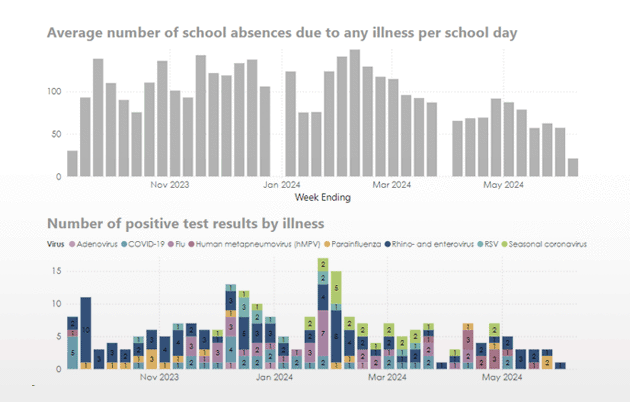The new study from researchers at the University of Wisconsin School of Medicine and Public Health found that deaths among adults receiving maintenance dialysis for kidney failure jumped between 15 and 20% during extreme humid-heat events. These events, defined as when the heat index — a measurement that indicates what combined temperature and humidity feel like — was greater than 105 degrees Fahrenheit for two or more days or more than 115 degrees for one day.
“This is more evidence that a warming planet poses an increased risk to vulnerable populations, in this case, people on kidney dialysis, who are more likely to die during extremely hot and humid weather,” said Dr. Matthew Blum, an assistant professor of medicine at the UW School of Medicine and Public Health, and a nephrologist at UW Health. “As nephrologists, we need to be especially concerned about our dialysis patients and look for ways to protect them from extreme weather.”
The study was published in the American Journal of Kidney Diseases.
Dialysis patients often have other health conditions, such as diabetes, heart and lung disease, and impaired fluid and electrolyte handling, all of which make it more difficult for people to tolerate extreme heat, according to Blum.
Healthy kidneys help the body regulate its temperature by conserving sodium and water to replace sweat loss. For people experiencing kidney failure, this ability is impaired or absent.
Blum and colleagues analyzed United States Renal Data System records from 945,251 patients living in 245 urban areas who began regular dialysis treatments between 1997 and 2016. During the 3.6 years covered by the study, 498,049 patients were exposed to at least one of 7,154 extreme heat index events. The largest number of humid-heat events occurred in the South, which had 49.3 events per urban area, followed by the Southeast at 29.9 events and the Southwest with 29.4 events. The Upper Midwest, which includes Wisconsin, had 3.1 heat index events.
A total of 500,025 deaths occurred during 2.5 million person-years of follow up, with exposure to a heat-humid event associated with an 18% higher risk of death. The researchers adjusted the data for variables including age, sex, years of dialysis and neighborhood poverty level. The greatest relative risk of death was associated with the climate region, with the Southeast, including Alabama, Georgia, Florida, North and South Carolina and Virginia, accounting for more deaths than the Southwest, despite a similar number of humid-heat events.
The most common causes of death among patients included heart-related incidents, such as myocardial infarction, cardiac arrest or arrhythmia, congestive heart failure and sepsis.

